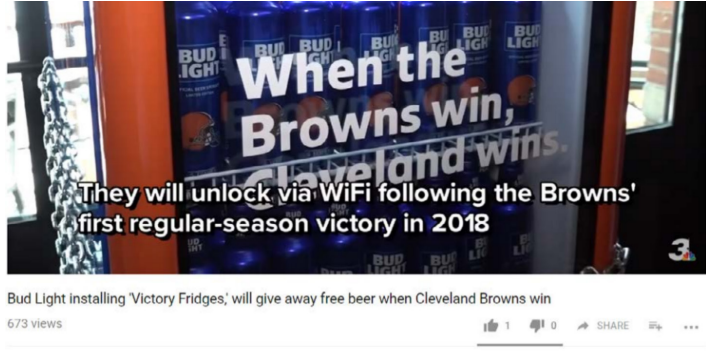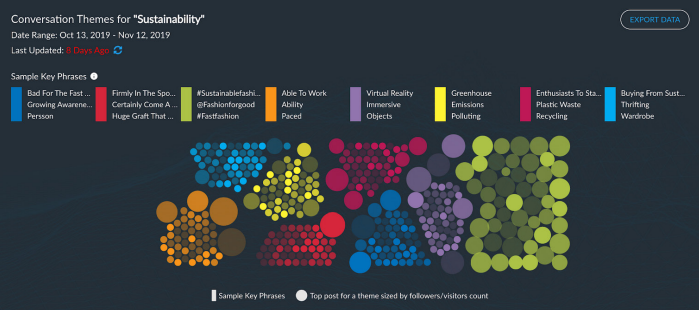How to Use Social Sentiment to Perform a Competitor Analysis | NetBase Quid
Artificial Intelligence
Social sentiment is a metric for assessing the feelings that underlie online mentions on social media and other platforms. The following social sentiments:
Positive: Customers are ecstatic, joyful, or enthusiastic.
Negative: Customers are upset, irritated, or angry. Consumers appear satisfied, but they don’t convey any specific emotions.
Any brand must be aware of its competition to prosper. There has never been a better use case for competitor analysis tools, from knowing which businesses are catching up to you to what they offer your common target consumers.
Determine who the competition is before taking any further action, and make no assumptions, you never know where a competition might emerge.
No matter how you’re approaching the competition, chances are there, but how do you recognize them if they are so different and rebellious? By doing sentiment analysis—or, to put it more precisely, by following the love. Sentiment is the metric that tells you which social topics and conversations have the most value.
In this guide we’ll be discussing how to use social sentiment correctly to benefit your brand, to learn more, please keep on reading.
The Components of a State-of-the-art Sentiment Analysis Tool:
- Categorization of emotions from positive to negative; Positive and negative emotions are divided into categories, which we call Net Sentiment. Its values range from -100 to +100.
- Measurement of emotion strength; This is what we refer to as Passion Intensity, and we rate it from -100 to +100.
- Next-Generation Artificial Intelligence (AI): allowed language analytics that understands all human language quirks—including pop culture, slang, sarcasm, netspeak, and emojis—as well as all world languages. It also automatically displays similar themes without any bias from the user.
- Image Analysis capabilities: people increasingly share photographs without text to make their points because they believe that emotions can be expressed in more ways than just words. For analytics to be correct, these images must be counted. These qualities provide a depth of insight into consumer preferences and dislikes that is unmatched—essential for competitor analysis
You can find companies like Chico’s, Park Boutique, Zyia, Joe Fresh, Target, and Khloe Kardashian’s Good American collection when you search for these terms but no mention of Fabletics or Lululemon.
What about other well-known companies like Nike and Adidas? they might be brought up in a further examination of the terms.
The idea is that you would be neglecting a lot of brands that could develop to threaten yours at any time if you assumed that just the most well-known companies were your competitors.
There’s another reason to look at sentiment based on keywords that matter to your industry. You’re not looking for what your brand does well, you should already know that. You need to know what others are doing well (or not), and whether that information should change your approach.
Assess and Take Action
To get a feel of how this works in practice, let’s look at sponsorships. NFL sponsorships need special consideration because they can be challenging, and they also provide useful examples!
For instance, the “Victory Fridge” ad for Bud Light was very successful. As a result of its YouTube presence which was aided by several news sites distributing videos about its campaign, the company was so successful that it created its roster of influencers.

Solving Problems with Competitor Analysis
Understanding what your market prefers can help you focus your efforts where they are most needed. Any information you possess that your rivals overlook is a point in your favor.
For example, knowing which ice cream flavors are popular in Europe. This is vital information if ice cream or gelato is a component of your strategy!
Anticipating Problems with Competitor Analysis
User prejudice is the largest challenge brands have when doing competitor analysis. Let’s support this, the information is incredibly precise and usable when using a robust next-generation AI-powered analytics system. Brands have much more than just the user in mind when adopting something that is powered by “ancient AI.”
Concerning prejudice, certainly, their insight is lacking, if you’re employing a top-notch solution with strong capabilities, your efforts should be directed toward eliminating human bias.
You’ll need a solution that can surface information without requesting user input to address it.
Doesn’t that seem incredibly science fiction? It exists and is.

Conclusion:
Sentiment analysis identifies the following:
- The material that is most appealing to both your audience and the followers of your rivals. the media outlets that your target market prefers.
- The fervent preferences of customers who support your rivals. Additionally, it indicates what drives them absolutely bonkers.
- Understanding each of these ideas enables you to design a customized client experience that will win over the supporters of your rivals. Any of these details that are disregarded give an advantage to rivals who are focused on the same activity.
Make sure to download the full guide and start implementing social sentiments in your search now!
The Content of “How To Use Social Sentiment to Perform a Competitor Analysis” Guide:
- The Components of a State-of-the-art Sentiment Analysis Tool:
- Asses and Take
- Solving Problems with Competitor Analysis
- Anticipating Problems with Competitor Analysis
- Conclusion
Number of Pages:
- 9
Pricing:
- Free






